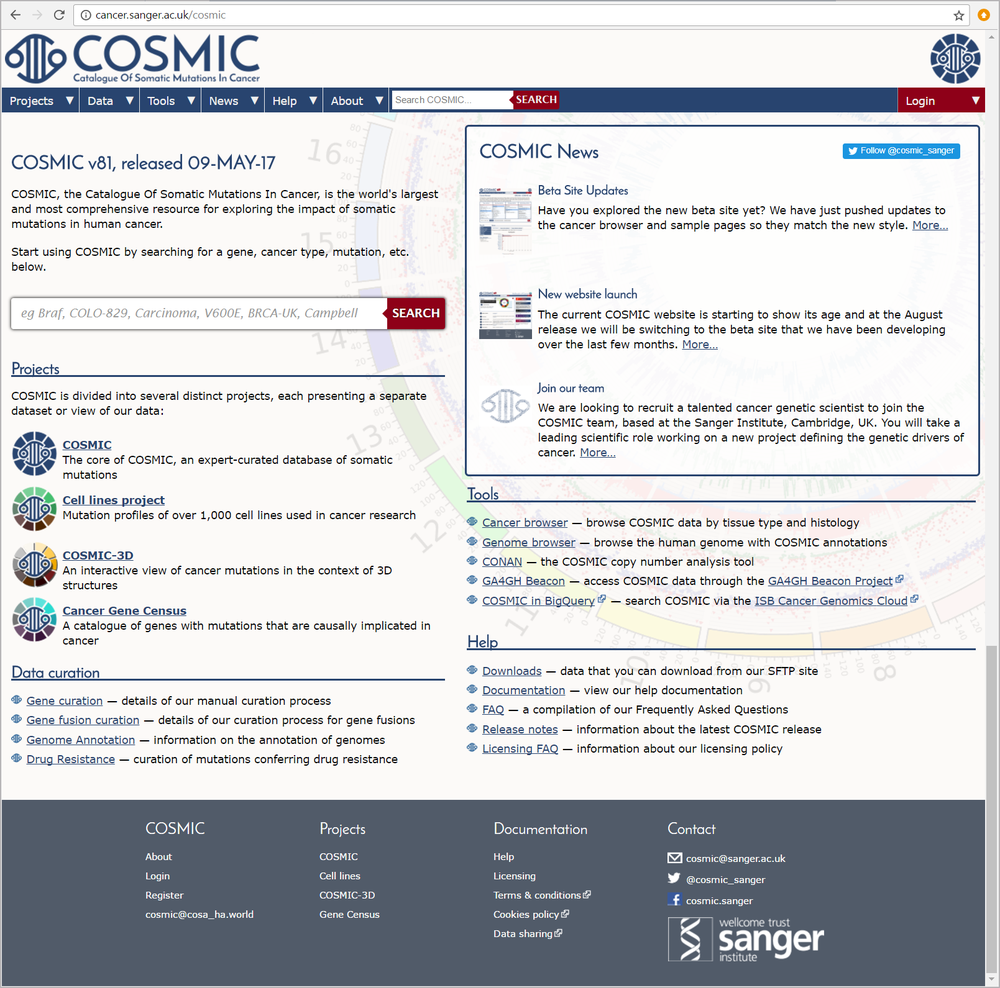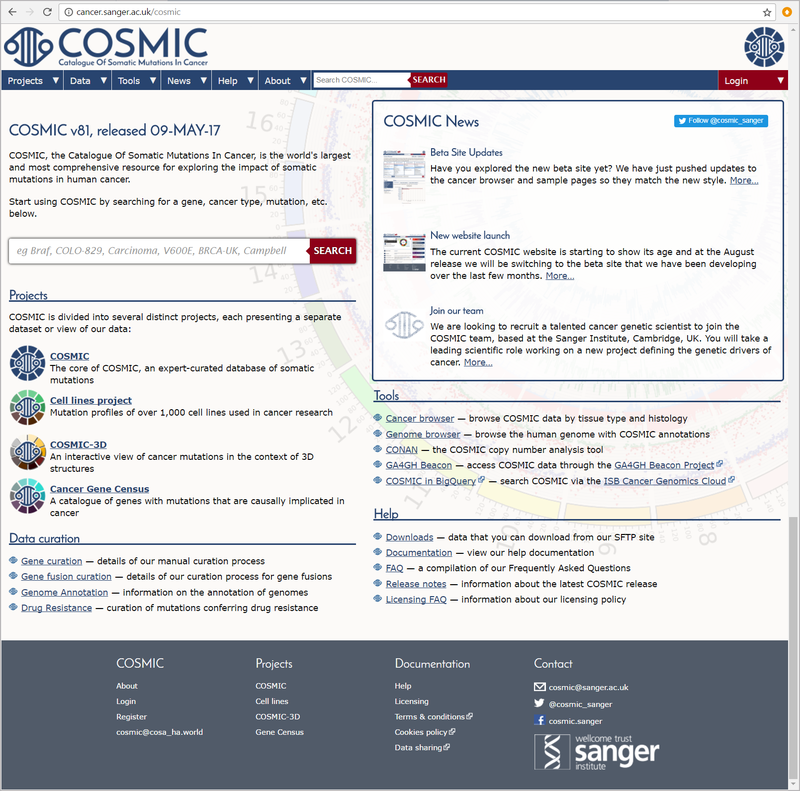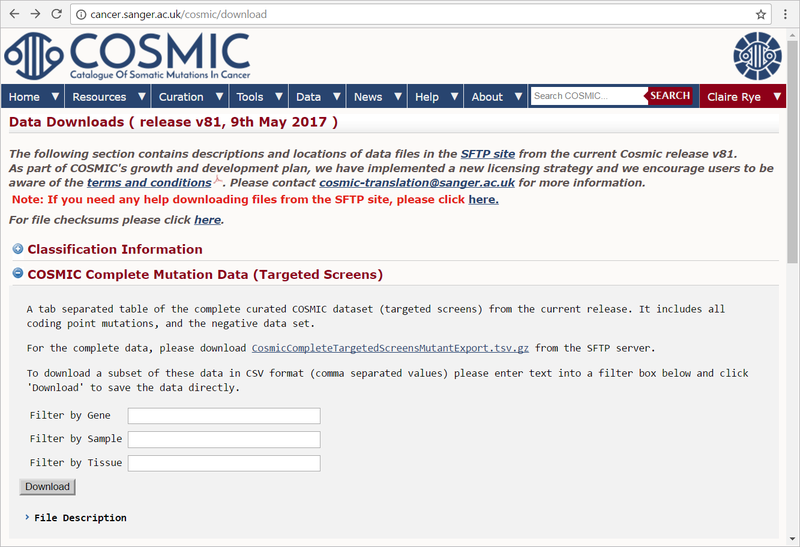
New Website
9 May 2017
Edited 3rd August 2017 to update links and information as this site is now the main live site.
Our web developers have been updating the COSMIC website in order to modernise and improve the look and feel of the site. We have also been working to improve the usability of some of our key pages, adding new functionality and making layouts hopefully more intuitive and user-friendly. As part of the modernisation, we've also been incorporating new features in this new site, notably the Hallmarks of Cancer data and some new hallmark visualisations. The site is available now at the usual URL, but we've left the old site up and running as legacy at http://cancer-legacy.sanger.ac.uk/cosmic so you can continue to view everything exactly as it was before, including the new data from release v82. Although this site will no longer be developed and will be taken down in November, so we encourage users to make the switch over the autumn.
Here's a quick run down of some of the main changes in the new site:
The home page
The main change on the home page is the removal of the old Genomic Landscape of Cancer tool. While the circos plot provides a great way to visualise the whole genome, we found that it wasn't being widely used, so though we've kept the image itself as a new watermark for the page, the space has been given over to a new news panel. We'll be using our new blog to keep you up to date with developments in COSMIC and highlighting new features or changes to our website or data.
Elsewhere, we've re-organised the menu items and footer, making it easier to navigate to key parts of the site and also making sure that important information, such as our help-desk email address, is available throughout.

The gene pages
Although the gene pages contain the same information as previously, we've re-organised them to put everything in one page, rather than behind a series of tabs. Although the tab layout was much more compact, it also successfully hid a lot of the data in the page, making it hard to find and confusing to navigate.
All of the information is now displayed in separate sections, arranged vertically in the page. You can jump quickly to separate sections using the links in the sidebar, which remain fixed as you scroll down the page.
The sections can also be re-arranged by clicking and dragging the menu links in the side. Dragging the links to re-order them will move sections within the page. You can also turn sections on and off by clicking on the "X" in the sidebar links. Disabled sections will be hidden in the page and the link will be greyed out in the sidebar. If you re-order the page or turn off any sections, your preferences will be stored in a cookie so that the next time you come to the site, or visit the page for another gene, your settings will be remembered.

Downloads
A set of filtered COSMIC datasets are now available to be downloaded directly from the COSMIC website in CSV format. This can be done through the downloads page, though please note that you do need to be registered and logged in for the direct download options to appear, as shown below. The files can be filtered by gene, sample or tissue type; simply type in the option you want then hit the download button. It's important to note that you can only filter on one field at a time; selecting multiple filter options, for example choosing BRAF as the gene and kidney as the tissue, will give you two files (one with data for BRAF only, one with data for kidney samples only), rather than a single file filtered by both gene and tissue.
Because of the size of the files containing all COSMIC data, you will still need to download these via the SFTP server. The mechanism for accessing the SFTP site has not changed.

The sample pages, cell lines project pages and some of the information pages within the new beta site currently still have the old style layout, however the beta site will be gradually updated over the next few months as we work through the rest of the site. We want to hear what you think of the new features and how you find the new layout. Please send all feedback to cosmic@sanger.ac.uk.
